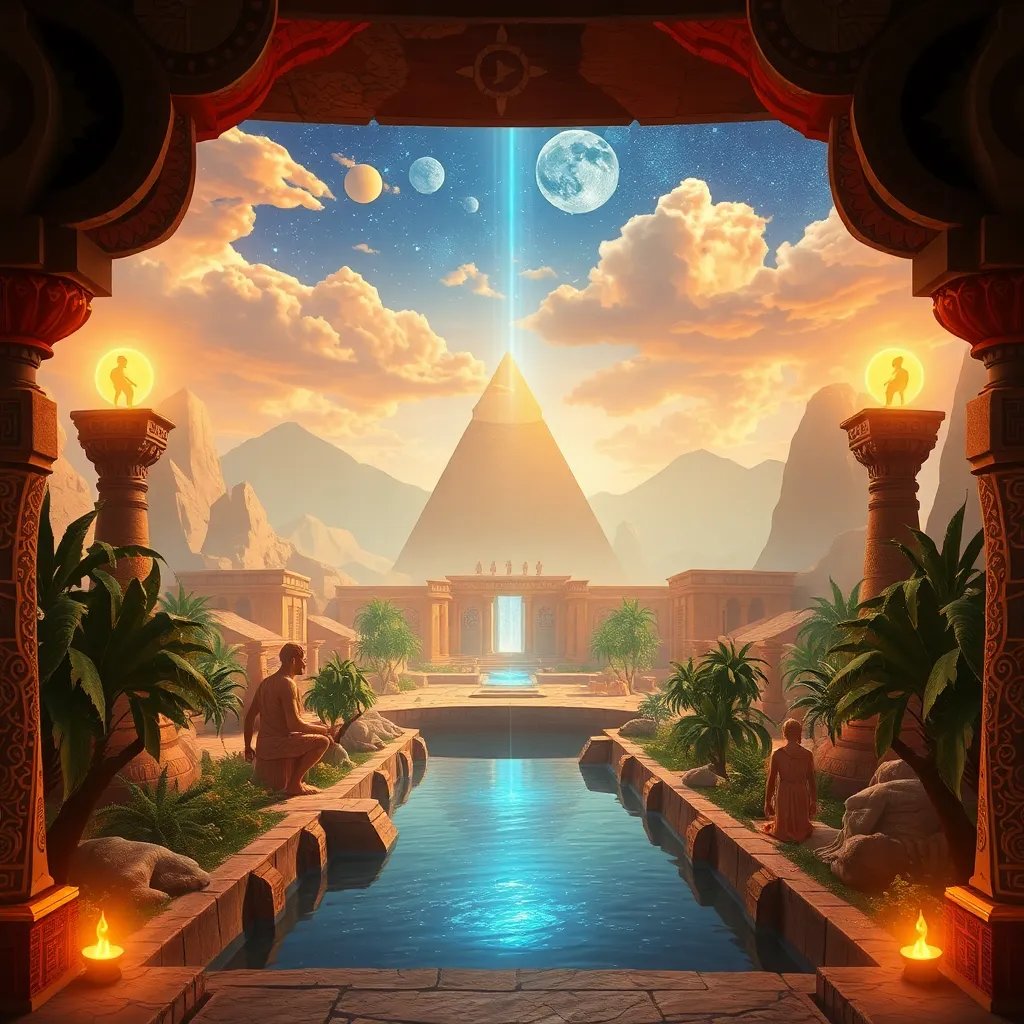The Myth of the Celestial Garden: The Paradise of Aaru
I. Introduction
Aaru, in ancient Egyptian mythology, is often depicted as a celestial garden—a paradise where souls could find eternal peace and happiness. This concept of a heavenly afterlife resonates across various cultures, reflecting a universal desire for a place of bliss beyond mortal existence. The purpose of this article is to delve into the myth of Aaru, exploring its symbolism and the significance it held in the spiritual beliefs of ancient Egyptians.
II. Historical Context of Aaru
The origins of the Aaru myth can be traced back to ancient Egyptian texts, including the Pyramid Texts and the Book of the Dead. These texts provide insight into the beliefs surrounding the afterlife and the journey of the soul after death. Aaru is intimately connected to the ancient Egyptians’ understanding of the afterlife, serving as a reward for those who lived a righteous life.
Aaru plays a crucial role in the larger context of Egyptian cosmology. It is seen as a paradise where the souls of the deceased could reside in peace, surrounded by lush fields and abundant resources. This concept was fundamental to the Egyptians’ understanding of death, life, and the continuum of existence beyond the physical world.
III. Description of Aaru: The Celestial Garden
Visually, Aaru is often portrayed as a verdant landscape filled with lush greenery, flowing rivers, and abundant crops. It symbolizes fertility, life, and the eternal cycle of nature. The imagery associated with Aaru evokes feelings of tranquility and happiness, making it an ideal resting place for souls.
When compared to other mythological paradises, such as the Garden of Eden in Judeo-Christian beliefs or Elysium in Greek mythology, Aaru stands out with its unique characteristics. While all these paradises serve a similar purpose of providing eternal bliss, Aaru is particularly defined by:
- Vast fields of ripe crops
- Cool, refreshing waters
- Presence of the sun god Ra, symbolizing eternal light
- Animals living harmoniously, representing the cycle of life
These elements help define Aaru as a sanctuary where the souls can enjoy eternal bliss, free from the pains and struggles of earthly life.
IV. The Journey to Aaru
The journey to Aaru is not without its challenges. Central to this journey is the weighing of the heart, a critical moment in which the deceased’s heart is weighed against the feather of Ma’at, the goddess of truth and justice. This judgment determines whether the soul is worthy of entering Aaru.
Souls face various trials and tribulations during their journey, including navigating the treacherous Duat, the realm of the dead. It is here that they must confront their past actions and the consequences of their choices in life. Osiris, the god of the afterlife, plays a significant role in this judgment process, offering guidance and support to the souls on their journey.
V. Symbolism and Themes in the Myth of Aaru
The myth of Aaru encapsulates several profound themes, particularly those of rebirth and resurrection. The cyclical nature of life and death is emphasized, as souls transition from the physical realm to a state of eternal existence.
Moreover, Aaru is rich in symbolism related to nature and fertility. The lush gardens and abundant crops reflect the Egyptians’ reverence for the earth and its ability to sustain life. This interconnectedness of life and death is a recurring theme in the myth, highlighting the belief that death is not an end but a transformation into another state of being.
VI. Aaru in Art and Literature
Aaru has been represented in various forms of ancient Egyptian art and inscriptions. Tomb paintings often depict scenes of the deceased enjoying the delights of Aaru, surrounded by verdant landscapes and bounteous harvests. These artistic expressions served not only as a guide for the deceased in the afterlife but also as a reflection of the values and beliefs of ancient Egyptian society.
The influence of Aaru extends into later literature and artistic interpretations. Many modern adaptations reference the concept of a paradise akin to Aaru, showcasing its lasting impact on cultural narratives surrounding the afterlife. From fantasy novels to films, the themes of eternal bliss and paradise continue to resonate with contemporary audiences.
VII. The Legacy of Aaru in Contemporary Thought
The idea of Aaru has left an indelible mark on modern spiritual beliefs and practices. Many contemporary religions and philosophies draw parallels between their concepts of paradise and the myth of Aaru, underscoring the timeless human aspiration for a blissful afterlife.
When comparing Aaru to contemporary concepts of paradise, one can observe similarities in the descriptions of idyllic landscapes and eternal joy. Furthermore, the themes of rebirth and renewal found in Aaru resonate with modern ideas surrounding personal transformation and spiritual growth.
In today’s world, the legacy of Aaru continues to inspire discussions about life, death, and the meaning of existence, highlighting the relevance of its themes in our lives.
VIII. Conclusion
In summary, Aaru holds a significant place in ancient Egyptian mythology as a symbol of paradise and eternal peace. The narrative surrounding Aaru reflects the Egyptians’ deep understanding of life, death, and the afterlife, providing insights into their spiritual beliefs.
As we reflect on the enduring appeal of paradise myths, it becomes clear that the lessons learned from Aaru—about the value of living a righteous life, the interconnectedness of existence, and the hope for an afterlife—remain relevant today. The myth of the Celestial Garden continues to inspire and resonate, inviting us to contemplate the beauty of life beyond the mortal realm.




